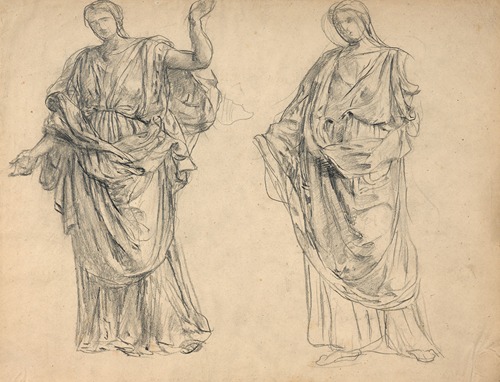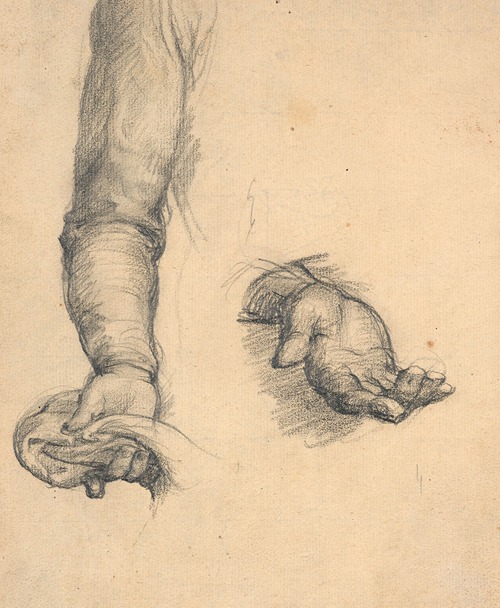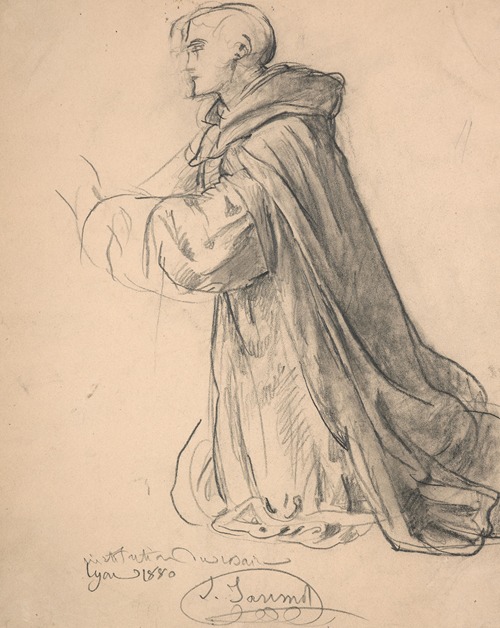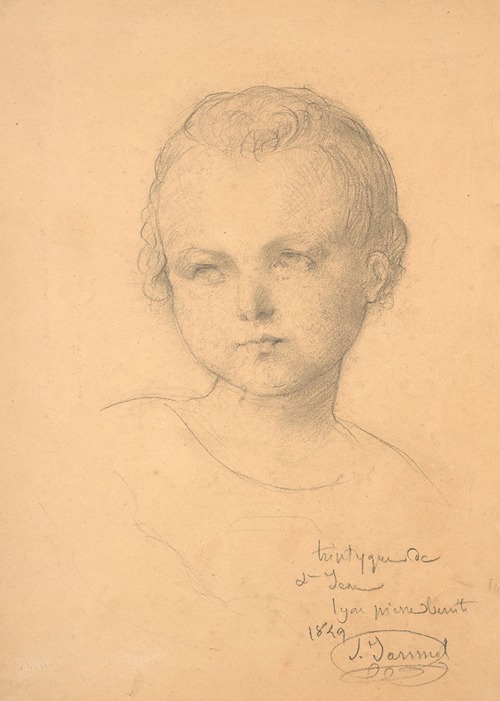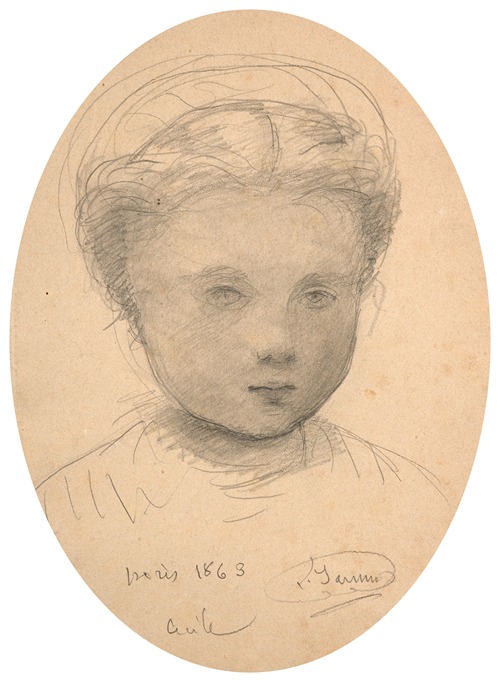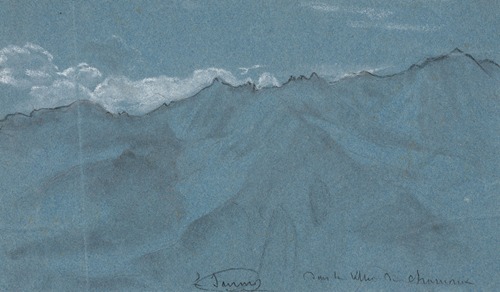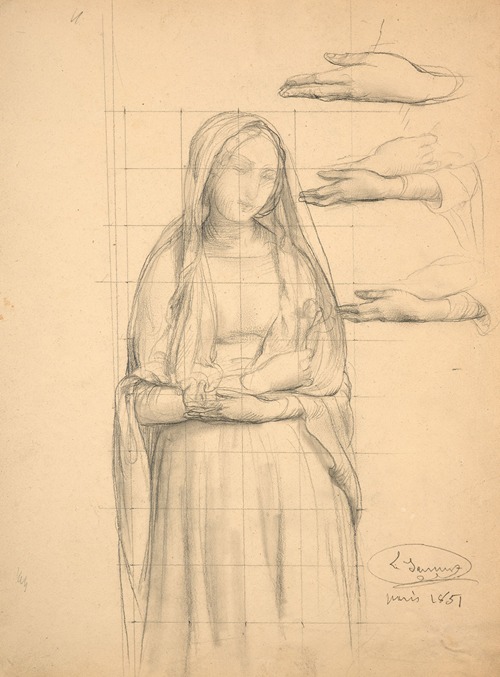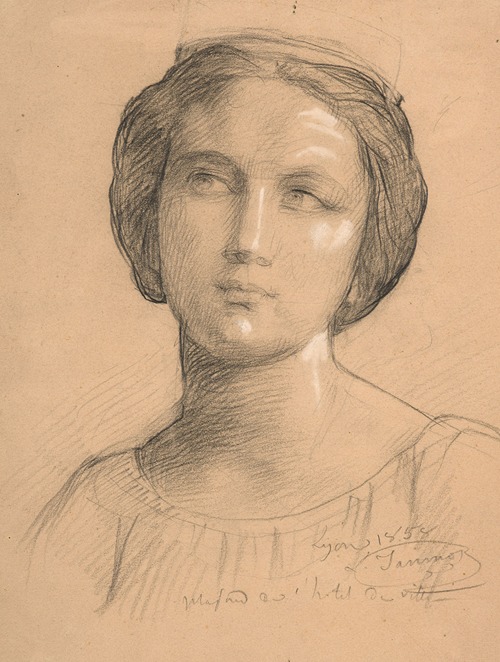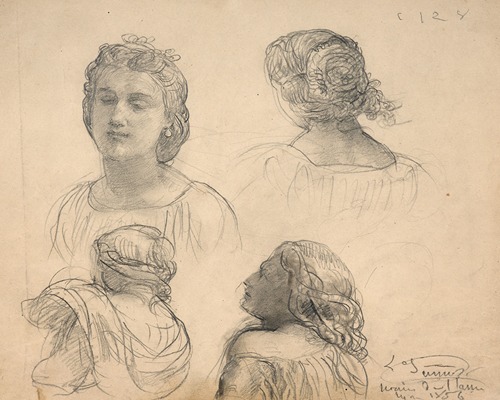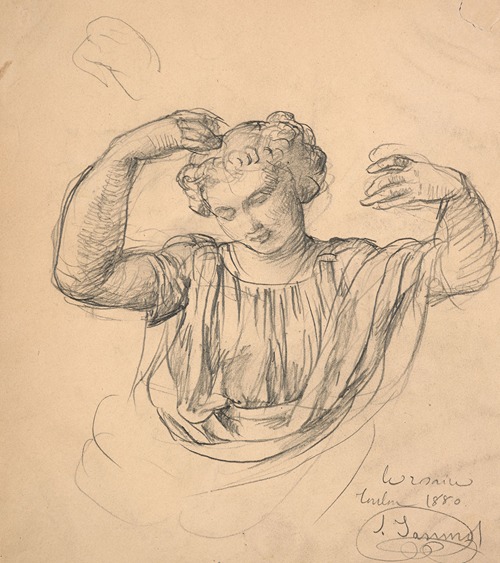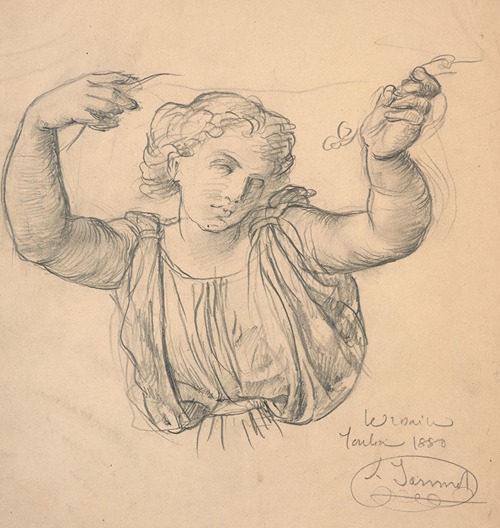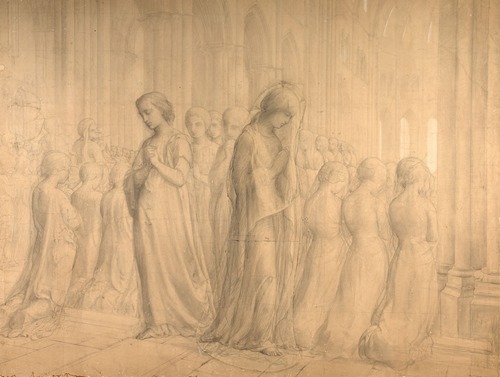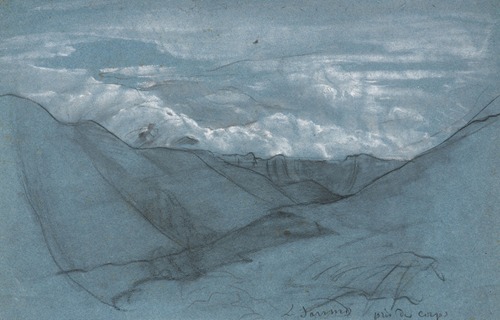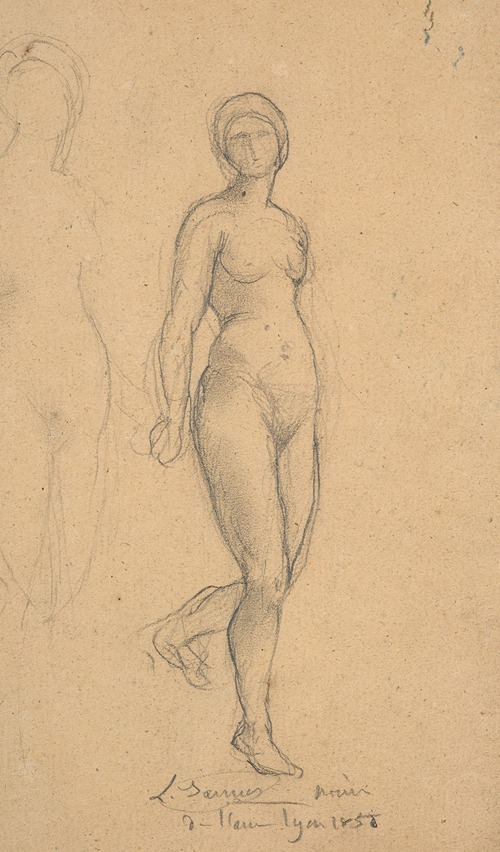
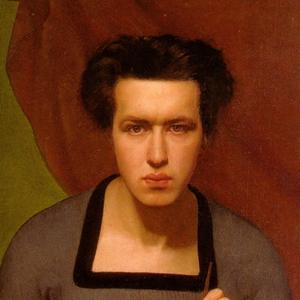
Anne-François-Louis Janmot was a French painter and poet.
Janmot was born in Lyon, France, of Catholic parents who were deeply religious. He was extremely moved by the death of his brother in 1823 and his sisters in 1829. He became a student at the Royal College of Lyon where he met Frederic Ozanam and other followers of his philosophy professor, Abbe Noirot. In 1831 he was admitted to the École des Beaux-Arts de Lyon and a year later, he won the highest honor, the Golden Laurel. In 1833, he came to Paris to take painting lessons from Victor Orsel and Jean-Auguste-Dominique Ingres. With other Lyon painters, he entered the Society of St. Vincent de Paul. In 1835, he went to Rome with Claudius Lavergne, Jean-Baptiste Frenet and other students and met Hippolyte Flandrin.
After his return to Lyon in 1836, Janmot would attract the attention of critics of the Salon de Paris in conducting large-scale paintings with religious inspiration such as The Resurrection of the son of the widow of Nain (1839) or Christ in Gethsemane (1840). After 1845, he attracted the interest of Charles Baudelaire with his painting Flower of the Fields that allowed him to access to the Salon of 1846. Theophile Gautier was impressed by his Portrait of Lacordaire (1846). But the failure of his Poem of the Soul at the Universal Exhibition of 1855 disappointed him. In December of that year he married Leonie Saint-Paulet, from a noble family in Carpentras.
In 1856, Janmot obtained a commission to paint a fresco (since destroyed) representing the Last Supper for the church of St. Polycarp. Other orders followed, including the decoration of the dome of the Church of St. Francis de Sales and for the town hall that had been renovated by his friend the architect T. Desjardins. He was then appointed professor at the École des Beaux-Arts.
Surprisingly, Janmot moved to Paris in 1861 after having been promised a commission for the Church of St. Augustine, but this project was abandoned three years later. In experiencing significant family and financial problems, Janmot accepted a professorship at the Dominican School of Arcueil. At that time, in his home in Bagneux, he made many portraits of the members of his family (only photographs are currently available).
After the birth of her seventh child in August 1870, his wife died in Bagneux. While the Prussian troops approached and occupied his home, he fled to Algiers with his stepfather and made landscape paintings. He returned in June of the following year in Paris and led a solitary life. His house in Bagneux had been looted. In 1878, he produced a fresco in the chapel of the Franciscans in the Holy Land, but this work was not followed by any further order.
Faced with family and increasing financial problems, Janmot came to Toulon, and despite some orders (new Portrait of Lacordaire (1878, Museum of Versailles), Rosaire (Saint-Germain-en-Laye, 1880), Martyrdom of St. Christine (Solliès-Pont, 1882), he lived a retired life. He finished the second part of the Poem of the Soul that the patron and former industrial Félix Thiollier was willing to publish.
In 1885, Janmot married a former student, Antoinette Currat, and returned to Lyon. He made charcoal drawings on the theme of the underworld, which can be regarded as a kind of continuation of the Poem of the Soul, including Purgatory (1885) and The End of Time (1888). In 1887 was published in Lyon and Paris an over 500-page book entitled Opinion of an artist on art and includes articles previously written by Janmot. He died five years later at the age of 78.
